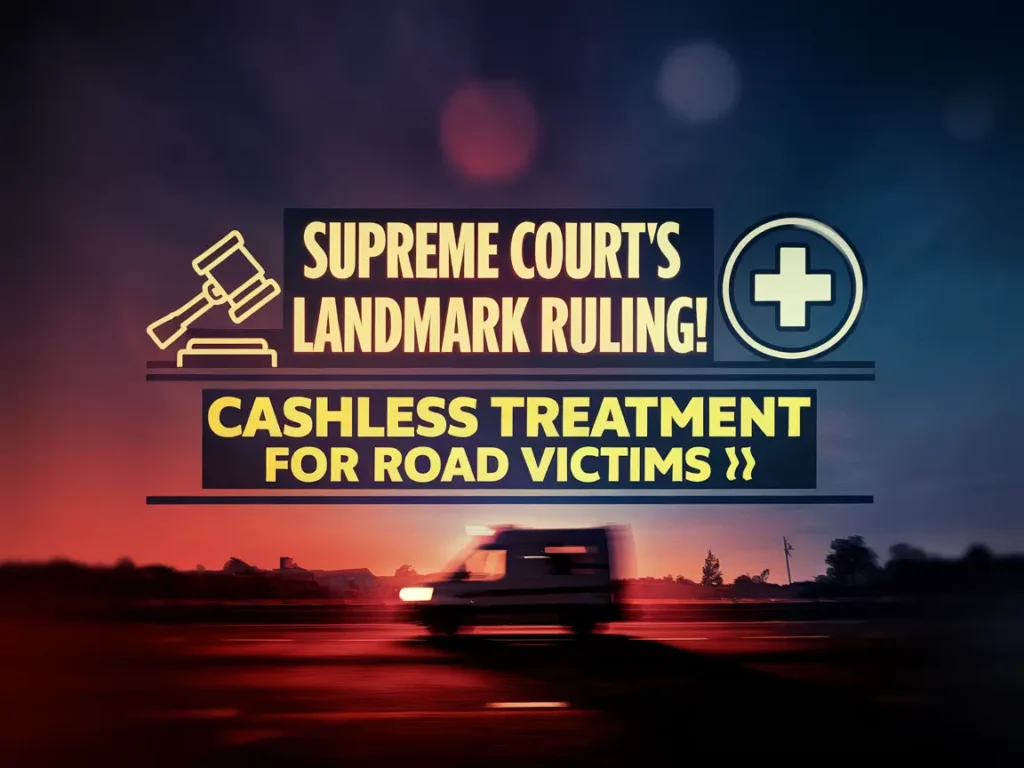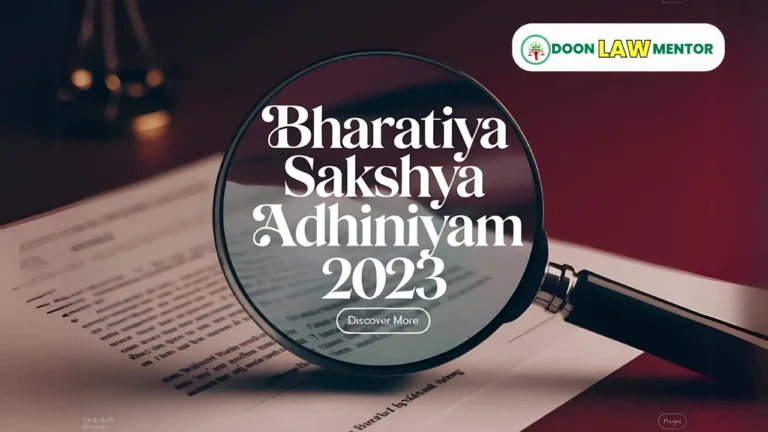Supreme Court’s landmark judgment in the case of S. Rajaseekaran v. Union of India directs the Central Government to implement a cashless treatment scheme for road accident victims during the “golden hour.” This ruling emphasizes prompt medical care to save lives and highlights critical reforms under the Motor Vehicles Act, 1988.
Table of Contents
Landmark Judgment: Supreme Court‘s Directives on Road Accident Compensation
The Supreme Court has delivered a groundbreaking verdict aimed at transforming the compensation and medical treatment system for road accident victims. This judgment ensures immediate and equitable assistance to those injured in accidents, addressing long-standing procedural delays and inefficiencies.
Key Highlights of the Judgment
1. Cashless Treatment for Road Accident Victims
The Supreme Court directed the Central Government to frame a scheme under Section 162 of the Motor Vehicles Act, 1988 (MV Act), ensuring cashless treatment during the critical “golden hour” for road accident victims.
- Golden Hour Defined: The first hour after a traumatic injury when prompt medical care can save lives (Section 2(12-A), MV Act).
- Deadline for Implementation: The government must finalize and operationalize the scheme by March 14, 2025.
- Judicial Bench: Justice Abhay S Oka and Justice Augustine George Masih emphasized the statutory and constitutional obligation to protect the right to life under Article 21.
2. Significance of Section 162 and Motor Accident Fund
The judgment underscores the Central Government’s obligation under Section 162(2) to frame a cashless treatment scheme.
Provisions of Section 162:
- Mandates general insurance companies to cover treatment costs during the golden hour.
- Calls for the establishment of a Motor Vehicle Accident Fund (Section 164-B), managed by the Central Government, to support medical expenses and insurance for road users.
Utilization Guidelines:
The Central Motor Vehicles (Motor Vehicle Accident Fund) Rules, 2022 outline disbursement mechanisms, ensuring transparency and accountability.
3. Hit-and-Run Compensation Scheme
The Court reviewed the Compensation to Victims of Hit-and-Run Motor Accidents Scheme, 2022, designed to assist victims where the offending vehicle is untraceable.
Current Challenges:
- Low Claim Rates: Despite 67,387 hit-and-run cases in 2022, only 205 claims were filed, with 95 settled.
- Pending Claims: Over 1,026 claims remained unresolved due to documentation deficiencies.
Supreme Court’s Directives:
- Claim Processing: General Insurance Council (GIC) must coordinate with claimants to resolve document deficiencies.
- Digital Portal: A centralized portal for document uploads and claim status tracking must be developed by March 14, 2025.
4. Addressing Procedural Challenges
The Court recognized systemic barriers that delay compensation and treatment, including:
- Lack of Immediate Medical Attention: Victims often wait for relatives or face hospital refusals over payment concerns.
- Documentation Delays: Inadequate information stalls claim settlements.
By addressing these gaps, the judgment prioritizes the right to life over procedural inefficiencies.
Case Study: S. Rajaseekaran v. Union of India and Ors (2025 SC)
The writ petition filed by Dr. S. Rajaseekaran, a leading orthopedic surgeon, highlighted the alarming statistics of road accident deaths in India and sought judicial intervention for systemic reforms.
Court’s Observations:
- Immediate medical care is essential to reduce fatalities.
- The statutory provisions under Sections 161, 162, and 164-B of the MV Act must be implemented rigorously.
Implications of the Judgment
For Road Accident Victims:
- Timely Medical Aid: Ensures cashless treatment during the golden hour.
- Financial Relief: Removes the burden of upfront medical expenses.
- Compensation Accessibility: Streamlined processes for faster disbursement.
For Policymakers and Insurers:
- Accountability: Statutory guidelines enforce strict compliance.
- Efficiency: Digital portals and clear documentation requirements reduce delays.
- Transparency: Fund management is audited by the Comptroller and Auditor-General of India.
Judicial Interpretation of Key Sections
1. Section 162: Cashless Treatment
The Court emphasized that the cashless treatment scheme must ensure:
- Coverage during the golden hour.
- Adequate funding mechanisms to sustain the scheme.
2. Section 161: Hit-and-Run Compensation
The Rs. 2 lakh for fatalities and Rs. 50,000 for injuries under this scheme require better implementation and public awareness.
3. Section 164-B: Motor Accident Fund
This fund is critical for financing the golden hour scheme and ensuring sustained insurance coverage.
Precedents Cited by the Supreme Court
- Kasabai Tukaram Karvar v. Nivruti (2022): Highlighted the importance of retroactive claims for accident victims.
- Shripad Gajanan Suthankar v. Dattaram Kashinath Suthankar (1974): Established guidelines for equitable fund allocation.
Future Roadmap for Implementation
Government’s Responsibilities:
- Finalize and implement the cashless treatment scheme by March 14, 2025.
- Address concerns regarding treatment caps (Rs. 1.5 lakh) and coverage duration (7 days).
Stakeholder Collaboration:
- Insurers, hospitals, and police must coordinate for seamless implementation.
- Public awareness campaigns to educate citizens about their rights.
FAQs
Q1. What is the Supreme Court’s directive for road accident victims?
The Court has directed the Central Government to implement a cashless treatment scheme during the golden hour by March 14, 2025.
Q2. What is the golden hour in road accident cases?
The golden hour refers to the critical first hour after an injury when prompt medical care has the highest likelihood of preventing death.
Q3. What is the compensation under the hit-and-run scheme?
Victims receive Rs. 2 lakhs for fatalities and Rs. 50,000 for injuries.
Q4. How will the Motor Accident Fund be utilized?
The fund will cover cashless treatment costs and provide insurance coverage to road users.
Q5. What measures are being taken for faster claim processing?
A digital portal will streamline document submissions and update claim statuses, ensuring efficiency.
Explore Our Courses Here
Conclusion
This landmark judgment is a transformative step towards ensuring justice, equity, and efficiency in road accident compensation. By prioritizing the right to life and mandating systemic reforms, the Supreme Court has reinforced its commitment to safeguarding the lives and rights of road users in India.
RoadAccidentCompensation, #GoldenHourTreatment, #SupremeCourtIndia, #MVAct1988, #LegalReforms2025, #HitAndRunCompensation, #IndianJudiciary, #RoadSafetyIndia, #MotorAccidentFund #cashlesstreatment #landmarkjudgement #DoonLawMentor








